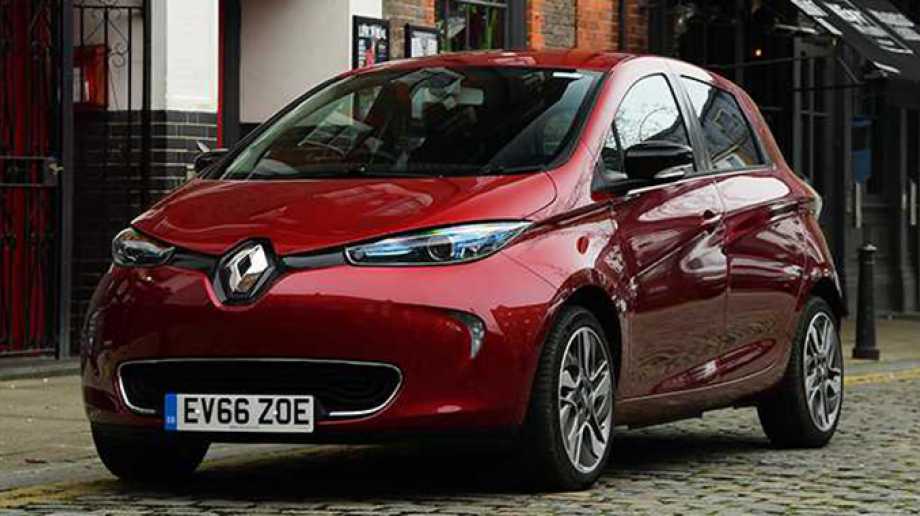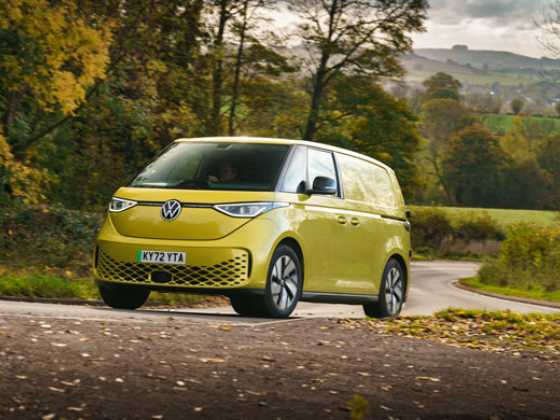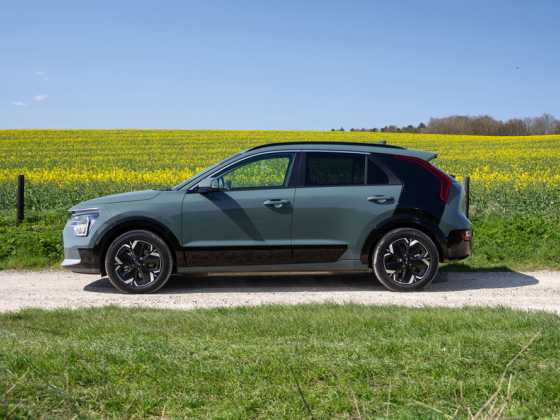First drive: Renault Zoe Dynamique R90 Z.E. 40

The Renault Zoe is the most popular electric vehicle in Europe, and a new version with a larger-capacity 41kWh battery is now available. Richard Gooding finds out what other benefits the revised Zoe has, aside from a longer 250-mile range
What is it?
The Renault Zoe has, unbelievably, been with us for half a decade. Much smaller and more premium than the company’s first all-electric offering, the Fluence saloon, the Zoe encapsulated a new train of electric car thought by the French manufacturer.
With more cutting-edge technology and stylish looks designed to appeal to fashion‑conscious urbanites, the Zoe was also an attractive fleet proposition thanks to its promise of low running costs.
With an official range of 130 miles on its 2012 launch from its 22kWh lithium‑ion battery and 65kW electric motor, the Zoe’s small car footprint made city centre e-mobility more appealing. Even though real-world range was between 62-93 miles, with a starting price of £13,995, the Zoe opened up the world of electric cars to many drivers who wouldn’t have considered one before.
Available until 2015 solely with a battery lease, an outright purchase option was added that year, along with a new ‘R240’ motor which increased the official range to 149 miles. Towards the end of 2016, the 41kWh Z.E. 40 battery-powered Zoe was launched, and it’s that car we have on test here.
With an increased range of 250 miles on the NEDC cycle, drivers can expect around 186 miles in the real world from the R90 ‘Rapid Charge’ car. The 22kWh Zoe is still on sale alongside the new 41kWh model, though, meaning there are now two ways of getting into one of the most affordable new electric cars on the market.
A ‘Quick Charge’ Q90 version of the 41kWh battery is also available for those drivers who favour charging speed out in the real world of public charging networks.
How does it drive?
As with the previous versions of Renault’s all-electric supermini (GreenFleet issue 66), the Z.E. 40 is completely ‘normal’ to drive and that’s not a criticism. The original Zoe was so like an internal combustion‑engined car to drive, there was no need for massive adjustments in driving style and it’s the same story here.
Light steering make the car easy to thread through the urban sprawl, but the electric powertrain’s refinement and new longer range cope well when it’s called on to stretch its legs.
The 92bhp/68kW motor bestows the little Renault with a decent turn of speed, and its agile handling offer somes driving pleasure. A non-adjustable effective regenerative braking system captures energy which would otherwise be lost under deceleration, with the lack of adjustability and differing modes of severity just adds to the Zoe’s ease of use.
New interior materials and trims smarten up the cabin, with the biggest change being the use of darker materials: much more practical.
What range does it have?
The Renault Zoe Dynamique R90 Z.E. 40 has a quoted range of 250 miles (around 400km) on the official NEDC cycle. In ‘real-world’ and urban ‘summer’ conditions, Renault expects this to drop to around 186 miles, but that’s still impressively the longest of any ‘mainstream’ (and by that we mean non-Tesla) electric vehicle. Range in colder conditions is expected to be 124 miles.
For comparison, the R90 22kWh car’s range is quoted as an official 149 miles, dropping to 106 and 71 in temperate and winter conditions respectively. The ‘Quick Charge’ Q90 model has an official quoted range of 230 miles.
Renault’s Range ‘OptimiZEr’ technology features new-generation regenerative braking technology, as well as a heat pump which reduces power demand for heating when on the move, and Michelin Energy E-V tyres: the French manufacturer claims that all these features can help boost available range by almost 25 per cent.
How long does it take to charge?
Just as with the previous versions of the Zoe, the new car is equipped with Renault’s patented Chameleon on-board charger, with allows the French company’s EV to be charged using different power levels through the same socket, from 3kW to 43kW.
All charges take place through the socket behind the front Renault badge, and a warning light blinks to indicate charging is underway, staying lit when the charge is complete.
The 22kWh ‘R90’ car takes 8-9 hours to charge from a 16A/3kW domestic supply, dropping to 3-4 hours with a 32A/7kW home wallbox/public charging connection. Charge to 80 per cent takes 1 hour 45 minutes when attached to a 32A/22kW connection, which decreases to 60 minutes on a 43kW supply.
For the 41kWh R90 model, Renault quotes times of 15, 7.5, 2 hours 40 minutes, and 1 hour 45 minutes to 80 per cent for the same power sources.
The ‘Quick Charge’ models with the 41kWh battery shared with the 41kWh R90 cars and ‘Q90’ motor can be charged in 15.5 hours from a 3kW supply, 8.5 hours from a 22kW source, and 2h 40 minutes when attached to a 22kW charger. Charge to 80 per cent when power is drawn from a 43kW supply takes just 65 minutes.
Zoe drivers can monitor both battery charging and vehicle range remotely from a smartphone, tablet or computer using Renault’s ‘Z.E. Connect’ or ‘Z.E. Inter@active’ systems. The car’s on-board seven-inch colour touchscreen ‘R-Link’ system informs of charge point locations, and an interactive charge point map also features on the Renault website.
Similarly to our current favourite zap-map.com, it also shows details of compatibility. For home‑charging, a Chargemaster 7kW Homecharger is offered by Renault. Two new charging apps – ‘Z.E. Trip’ and ‘Z.E. Pass’ – apps will available later this year (see panel).
What does it cost?
If, like 90 per cent of Zoe drives, you buy with a battery lease, the Zoe range starts not far off the same price point it did on its arrival in the UK four years ago. After the Government’s Plug-in Car Grant (PiCG) has been deducted, 22kWh battery Expression Nav R90 models begin at £14,245.
The Dynamique R90 Z.E. 40 with the larger 41kWh battery is £18,170 with the same deductions and leasing plan, while the Signature Nav R90 Z.E. 40 is another £2,250 on top of that.
Battery leasing costs start at £59 with an annual mileage cap of 4,500 miles (the minimum available term), and increases by £10 in 1,500-mile increments, finishing at £99 with a 10,500-mile limit. The smaller battery 22kWh car meanwhile, is £10 cheaper in every mileage instance. If you cover even greater distances, excess mileage is priced at 8p per mile.
If you’d like to own your Zoe outright and not pay any leasing costs, the ‘Zoe i’ range starts at £19,845 for the Expression Nav R90, rising to £23,770 for the Dynamique R90 Z.E. 40, topping out at the £26,020 Signature Nav Z.E. 40, once all PiCG deductions and ‘on-the-road’ costs have been taken into account.
All versions of the Zoe are covered by Renault’s ‘4+’ warranty and roadside assistance package which envelop the car for four years of 100,000 miles (unlimited in the first two years).
How much does it cost to tax?
As all Zoes are zero-emission cars, they slot into the lowest Vehicle Excise Duty (VED) band possible. This means they cost nothing to tax in the first year, and subsequent years thereafter at current rates. The Benefit in Kind rate for the whole Zoe range is 9 per cent for 2017‑2018, and 13 per cent from 2018‑2019. This rises to 16 per cent in 2019-2020.
Why does my fleet need one?
The Zoe has enjoyed tremendous sales success, with the 50,000th car produced in April 2016. The best-selling and most popular EV in Europe in 2015, Renault has wisely not tinkered much with its popular all-electric model.
Just as with the original model, the Zoe Z.E. 40 drives just like a ‘normal’ internal combustion-engined small car, with very little adjustment needed. Stylish, comfortable, and now with that much longer and eminently more practical range, there are very few downsides to the 41kWh Zoe.
There’s no doubt that the larger capacity battery makes longer and more expensive electric vehicle range more affordable, and the new refinements and battery capacity increase have only further spotlighted the small electric Renault’s appeal, which was nowhere near dimming just yet.
ADDED APP USABILITY
Available later this year, the new ‘Z.E Trip’ and ‘Z.E Pass’ connected services will make the Zoe even more user-friendly.
Z.E. Trip allows drivers to locate all public charging stations in many European countries and can be accessed by the car’s R-Link navigation system, or via the internet for advance journey preparation.
Z.E. Trip also indicates the availability of each charge point in real-time, as well as its type and compatibility. Drivers can then select a point based on its charging capacity, with the right speed to suit their requirements.
The Z.E. Pass app meanwhile, makes charging easier at most public charging points in Europe, even though they are owned by a plethora of operators. Drivers can pay using the smartphone app or with a singular RFID badge.
Available charging points and price comparisons at different points can also be selected on both a smartphone or tablet app. No registration on each network is needed.
The new apps join the existing Z.E Connect and Z.E Inter@ctive systems that allow drivers to both receive information and interact with their Renault electric vehicle. Z.E Connect is available on all versions of the Zoe, while Z.E. Inter@ctive forms part of the specification of Dynamique-specification cars upwards.









